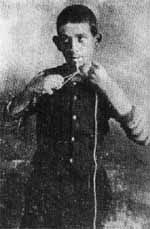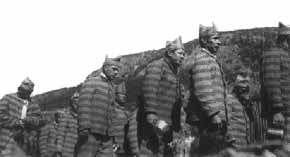| Chapter 6 The Prison of the End of the World Ushuaia’s Prison |
|
|
The sole mention of Ushuaia’s prison made people uneasy, as a result its location and solitude as much as for the type of criminals that were sent there. To society as a whole, it meant a one way ticket. During a long time it was considered the Argentine "Siberia". Fortunately, the prison no longer exists as such. It now houses a collection of pictures and documents that, along with the chronicles of the first settlers, allow us to know the habits, work, escapes, punishments and personalities of the most infamous characters during the Argentine turn of the century.
There were already two examples of successful prison colonies in the world: in France, in its Algerian colonies and in England, in the Australian colonies. In 1883, the Argentine president Julio A. Roca sends a bill to the Senate to build a prison colony in the south. Although the law was never passed, the first ten convicts reach Tierra del Fuego during 1884. They were meant to build the lighthouse in the Isla de los Estados, "… the light that marked the end of the world…" as described by Jules Verne in his novel "The Lighthouse at the End of the World". |
On September 15th, 1902, the foundation for the Nation Prison is laid, but it was in 1882 that the idea of a prison colony was first mentioned. It was the year after the boundary treaties with Chile were signed. By 1902 there had been many discussions regarding the most appropriate
location, and whether it should be a prison colony or just a regular
one. The prison would have a series of sheds, and a wooden railway
system – later to be replaced by iron – that would cut
across town joining the prison to the woods where the trees were
being cut down. By 1907 the prison housed many activities, such
as: shoe making, carpenter’s shop, tailor’s shop, sawmill,
pasta manufacture, laundry, photography shop, firefighters’
quarters, print, band, large library, school, drugstore, first aid
assistance and its own energy supply. All these services were also
extended to Ushuaia.
|

